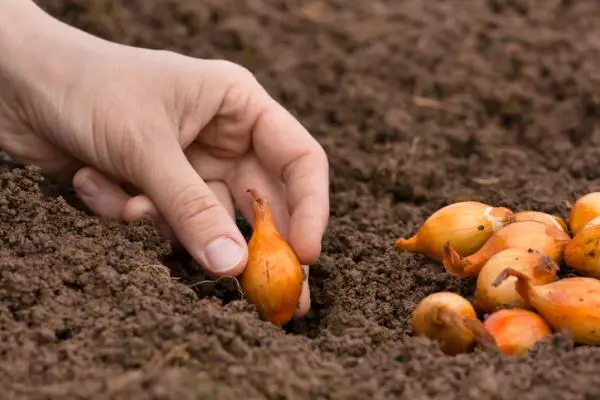The onion, with the scientific name Allium cepa , is a highly valued vegetable throughout the world as a cooking ingredient, since its bulb has an intense flavor that makes it a great dressing in a huge number of dishes and sauces. It is also highly valued in medicine due to the great properties it has for our health.
If you want to learn how to plant onions at home, whether in an orchard, garden or terrace, join us in this article.
When and how to plant onion
If you decide to sow the onions from seeds, it should be done in a seedbed or germinator . Unlike many other bulb plants and root plants, the onion does admit and even appreciates transplantation, so sowing in a seedbed will help us ensure abundant germination. The best time to sow is in late autumn , ideally with the waning moon.
To sow onion seeds in the seedbed , preparing the substrate yourself, follow these indications:
- For the substrate of the seedbed, it is recommended to use peat mixed with worm humus, which you can also enrich with perlite and vermiculite.
- Mix the onion seeds with coconut fiber, trying not to add too much. They are very small, but it is very likely that most of them will germinate.
- Spread the fiber and seed mixture over the prepared growing medium and water to add moisture, although make sure there is adequate drainage in the seedbed.
- In just over a week you should start to see them germinate.
When and how to plant onion
By the time of late winter and early spring , your onions should already be seedlings ready for transplanting outside. If you live in an area with a particularly cold climate, wait for the frosts to pass before transplanting the seedling.
It is best to prepare holes about 15 centimeters deep, which you must cover well once you have finished planting the already germinated onion
bulb .
Growing onion – basic care
The basic care of growing onions are:
Soil for growing onions
The most important thing when it comes to growing onion is the soil. This plant is very demanding in terms of nutrients and, therefore, requires soils that are very rich in organic matter. It prefers soils with a loose texture, preferably sandy loam. It can develop in clayey ones, although with difficulties, and the very sandy ones will give rise to badly formed bulbs, small and with a too intense flavor.
Light and location
In terms of light, the onion is grateful and needs a great contribution of sunlight, so it is recommended to plant it in an area in full sun, where it receives as much light as possible.
Watering for the onions
When it comes to irrigation, this plant requires very little water, especially after forming the bulbs. During their growth in the seedbed you can water them whenever you notice the dry substrate, but once the bulb is formed, you have to be very careful with excess watering. If the plant receives too much moisture, the bulb will rot, so you should try to water as little as possible.
Cleaning and trimming of the stem
Finally, pay special attention to cleaning adventitious plants or weeds. These tend to have a great capacity for draining nutrients from the soil, which can lead to the depletion of onions. Also, if your onions do bloom, you must prune the flower stalk, or the bulbs may not develop properly.
Caring for potted onions
If you are going to plant your onions in a pot, make sure the container has drainage holes and sufficient depth, as well as placing the pot in an area with as much direct sunlight as possible.
When to harvest onions
The first and most important sign that you should pay attention to to know when you can harvest your onions, you will find it in the leaves of the plant. When the vertices of the leaves begin to yellow , break the stems or necks of the plant, twisting them, and leave them in the same soil, without taking them away.
By doing this, we start the ripening stage of the onion itself. Once this is done, use a fork or other similar tool to, being very careful not to damage the skin of the bulbs, lift the onions a little, although without digging them up. Thus, we get the bulb drying process to start.
A few days after breaking the necks of the plants and lifting the bulbs, you can dig up the onions and let them dry in the sun for about 2 weeks . It is vital that the bulbs dry out completely if you want to enjoy good onions, so after these two weeks in the sun it is recommended to collect them, tie them and leave them in a cool and dry place for their conservation and final drying.
Now you just have to enjoy them in your favorite sauces and dishes!


